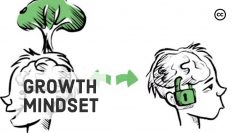The Learning Organization
A learning organization encourages personal mastery and cultivates open feedback to see problems and opportunities on all levels. Some argue that learning organizations attract and retain more talents. Others say that there is a competitive advantage for an organization whose people learn faster than the people of other organizations. Here are 6 characteristics most have in common:
They Cherish An Open Culture.
Learning organizations encourage everyone to share information, admit to mistakes and practice giving and taking constructive criticism. Once the problem is found, they try to understand its root cause and fix it. To achieve such a culture: walls are removed, information is shared and leaders show their human sides.
They Design and Implement: Feedback Loops
Some establish 360 degrees surveys, in which people assess themselves, their peers and their bosses. Employees at 5-star hotels ask guests for their opinions. Top schools may videotape teachers so they can later study themselves. Some even make feedback a team effort. Before any new project, they all get together to kick things off. After the project, they meet again to share and reflect on what has happened.
They Promote: Personal Mastery
Employees try to achieve personal mastery in their fields. Once they become experts, they feel proud of their work, they are motivated intrinsically and they can create positive change wherever they are. For example, a cleaner might come up with an idea on how to save water and an accountant on how to save bank fees. The job of the boss is to connect all experts and give directions.
They Plan for: Intelligent Fast Failure.
When they build something new, they don’t spend time to make assumptions on paper. Instead, they create what’s called Minimum Viable Product, a simple prototype with only the core functions. This is then presented to users as early as possible to test what they think. Because it is imperfect, even friends give their honest opinions. The goal: fail fast, but collect intelligent information so you can improve while going forward.
They Steal: Best Practices
Picasso apparently said that “good artists borrow, great artists steal”. Learning organizations study others, steal best practices and then implement them fast. The newspaper The Economists took advice from George Orwell; its editors never use jargon if everyday English works. Printing manufacturers stole the razor-and-blades business model from Gillette, selling printers cheap but ink expensive.
They Cultivate: A Common Vision
A learning organization prospers when all members share a common vision. That way employees can understand the importance of their role, connect the dots and develop systems thinking. When goals are clear, regulations can be reduced and people can create their own personal benchmarks of success. This reduces bureaucracy, authority, and corruption.
Salesmen and author Zig Ziglar once wrote: “the only thing worse than training people and having them leave, is not training them and having them stay.” At a learning organization, education happens as a side-product of working together, as everybody learns from each other to adapt to whatever the future might bring.











